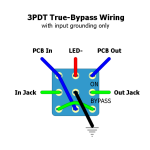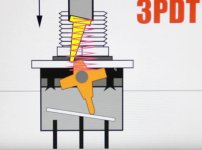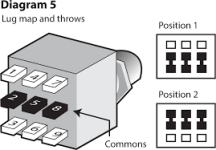I swear, I tried to bump existing threads. 
This kind of takes away the charm/simplicity of a pot-less pedal, but I'd love a Vol cut. I assume the Propolis is a bit over unity as-is...?
What's the best way to do this without affecting the stock Max Volume of the Propolis? That seemed to be a possible issue in another thread.
This is part of my "pedal education", so I reeeeally need this spelled out so I understand where to connect what, and if that's the ONLY thing connected to that spot. This is what one Vol Modder said:
"You just got to hook one lug on the "out" pad of the PCB, one lug to ground and one lug to the out jack."
1) So - there will be TWO wires going to the "Out" pad at the bottom of the PCB? One from the pot (lug #3?) and one from the footswitch?
2) A different lug (#1?) to ground - I see this mentioned often. Where do I physically connect to Ground? At the Power Jack or at the bottom of the PCB where the footswitch connects to Ground?
3) The last lug (#2?) to the Out Jack - Tip I assume? This is in addition to the wire already connecting the Out Jack & Footswitch?
Yes, I'm this much of a dum-dum still. I really only started understanding ANY of this about a month ago. Situations like these help me understand WHY things are the way they are, and lead to understanding a whole host of other things. Thanks for your patience, this forum has been incredibly helpful and fun so far.
This kind of takes away the charm/simplicity of a pot-less pedal, but I'd love a Vol cut. I assume the Propolis is a bit over unity as-is...?
What's the best way to do this without affecting the stock Max Volume of the Propolis? That seemed to be a possible issue in another thread.
This is part of my "pedal education", so I reeeeally need this spelled out so I understand where to connect what, and if that's the ONLY thing connected to that spot. This is what one Vol Modder said:
"You just got to hook one lug on the "out" pad of the PCB, one lug to ground and one lug to the out jack."
1) So - there will be TWO wires going to the "Out" pad at the bottom of the PCB? One from the pot (lug #3?) and one from the footswitch?
2) A different lug (#1?) to ground - I see this mentioned often. Where do I physically connect to Ground? At the Power Jack or at the bottom of the PCB where the footswitch connects to Ground?
3) The last lug (#2?) to the Out Jack - Tip I assume? This is in addition to the wire already connecting the Out Jack & Footswitch?
Yes, I'm this much of a dum-dum still. I really only started understanding ANY of this about a month ago. Situations like these help me understand WHY things are the way they are, and lead to understanding a whole host of other things. Thanks for your patience, this forum has been incredibly helpful and fun so far.







